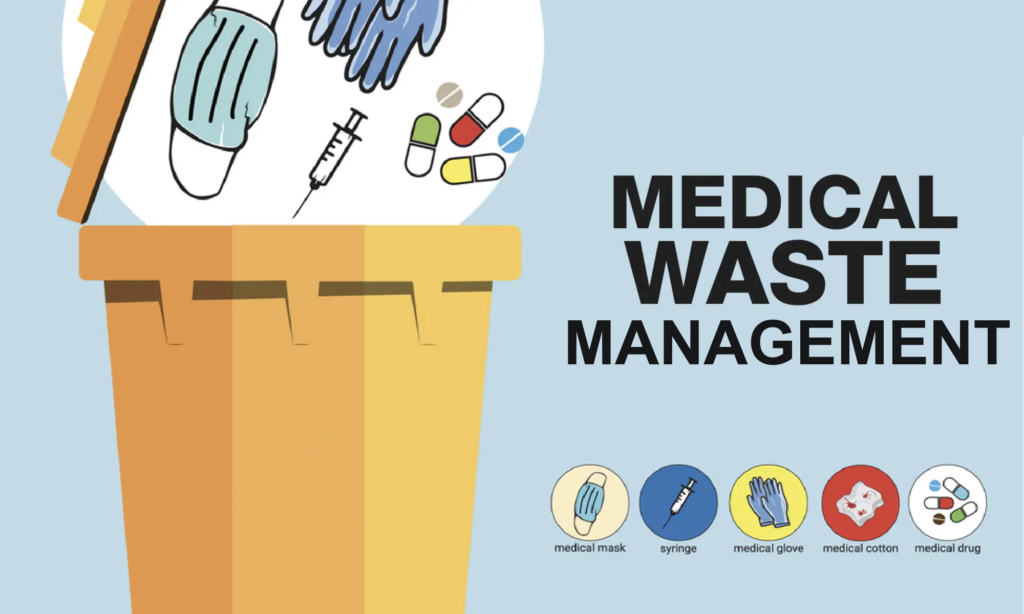Hospital Waste Management

Hospital waste management is a critical aspect of healthcare services that often goes unnoticed but plays a crucial role in maintaining public health and environmental safety. Proper management of waste generated in healthcare facilities is essential to prevent the spread of infections, protect healthcare workers, and minimize the impact on the environment. In this comprehensive guide, we will delve into the various aspects of hospital waste management, including types of waste, regulations, best practices, and emerging technologies.
Understanding Hospital Waste
Hospital waste, also known as healthcare waste or medical waste, encompasses a wide range of materials generated during healthcare activities. These materials can be categorized into several types:
- Infectious Waste: This includes waste contaminated with blood, bodily fluids, or other potentially infectious materials. Examples include used bandages, syringes, and cultures from lab work.
- Hazardous Waste: This category includes chemicals, pharmaceuticals, and other materials that pose a risk to human health or the environment. Examples include expired medications, mercury-containing devices, and chemical disinfectants.
- Sharps Waste: Sharps waste refers to items that can puncture or lacerate, such as needles, scalpels, and broken glass.
- Radioactive Waste: This type of waste is generate from diagnostic and treatment procedures involving radioactive materials.
- General Waste: non-hazardous waste generated in healthcare facilities, such as paper, food waste, and packaging materials.
Regulations and Guidelines
- Segregation: Healthcare facilities must segregate different types of waste at the point of generation to prevent cross-contamination and facilitate proper disposal.
- Packaging and Labeling: Waste containers must be properly labelled and securely packaged to prevent leaks or spills during handling and transport.
- Storage: Waste storage areas design to prevent access by unauthorized individuals and minimize the risk of environmental contamination.
- Transportation: Transporting hazardous and infectious waste requires special permits and vehicles equipped with safety features to prevent accidents.
- Treatment and Disposal: Different types of waste require specific treatment methods, such as autoclaving, incineration, or chemical treatment, followed by safe disposal in accordance with regulations.
Best Practices in Hospital Waste Management
- Training and Education: Healthcare personnel should receive training on waste segregation, handling, and disposal protocols to ensure compliance and safety.
- Use of Safety Equipment: Proper use of personal protective equipment (PPE) such as gloves, masks, and gowns reduce the risk of exposure to hazardous waste.
- Waste Minimization: Hospitals can implement strategies to reduce waste generation, such as purchasing in bulk, using digital records, and recycling materials where possible.
- Regular Audits and Inspections: Conducting regular audits and inspections of waste management practices helps identify areas for improvement and ensure compliance with regulations.
- Collaboration: Collaboration between healthcare facilities, waste management companies, and regulatory agencies fosters a coordinated approach to waste management and environmental protection.
Emerging Technologies in Hospital Waste Management
- RFID Tracking: Radio-frequency identification (RFID) technology enables tracking and monitoring of waste containers throughout the disposal process, enhancing traceability and accountability.
- Waste-to-Energy Conversion: Technologies such as waste incineration or anaerobic digestion can convert certain types of hospital waste into energy, reducing the volume of waste sent to landfills.
- Sterilization Systems: Advanced sterilization systems using steam, microwave, or chemical processes can effectively treat infectious waste before disposal, ensuring safety and compliance.
- Smart Waste Bins: Smart waste bins equipped with sensors can automatically detect and sort different types of waste, improving efficiency and accuracy in waste segregation.
- Data Analytics: Utilizing data analytics tools allows healthcare facilities to analyse waste generation patterns, identify trends, and optimize waste management strategies for cost-effectiveness and sustainability.
Conclusion
Proper hospital waste management is a multifaceted endeavour that requires adherence to regulations, the implementation of best practices, and the adoption of emerging technologies. By prioritizing safety, environmental stewardship, and efficiency, healthcare facilities can effectively manage waste while safeguarding public health and minimizing their environmental footprint. Continuous education, collaboration, and innovation are key pillars in achieving sustainable and responsible hospital waste management practices.